After our trip to Morocco last year, we are convinced that Moroccan cuisine has become one of our favourites. And no, it’s not just because we fell absolutely in love with Moroccan Mint Tea!
*This post may contain affiliate links, as a result, we may receive a small commission (at no extra cost to you) on any bookings/purchases you make through the links in this post. As an Amazon Associate, we earn from qualifying purchases. Read our full disclosure
There is a lot more to enjoy at a Moroccan dinner table than tea. The cuisine here is renowned for the use of complex spices and herbs that make even the most basic dishes full of flavour! It’s hard to pick just one specialty as the best food in Morocco, but here are just a few of our favourites.
The Cultural Roots Of Traditional Moroccan Food
This beautiful North African country has a layered history, and its many different cultural influences can be seen in Moroccan cooking. Originally home to the indigenous Berber people, Morocco has been settled and controlled by cultures from outside the region. Now independent and reunified, Morocco has been influenced by Berber, European, Arab, Jewish, and sub-Saharan cultures.
Now, Moroccan culture is indeed a melting pot, and evidence of the country’s history can be found on the dinner table. Traditional Moroccan dishes like tagine are of Berber origin, Harira has roots in Arabic culture, and Bastilla is a mix of Spanish and Sephardic Jewish food culture.
Spices and herbs are important in Moroccan food culture, and you’re likely to pick up flavours of ginger, saffron, turmeric, cinnamon, and cumin, among other fragrant seasonings like lemon juice While spices and fresh herbs are used liberally in Moroccan cooking, most dishes are not ‘spicy hot’, but flavourful instead. There are exceptions to this, and they are mainly contained to condiments like spicy harissa sauce or a dipping sauce accompanying a dish.
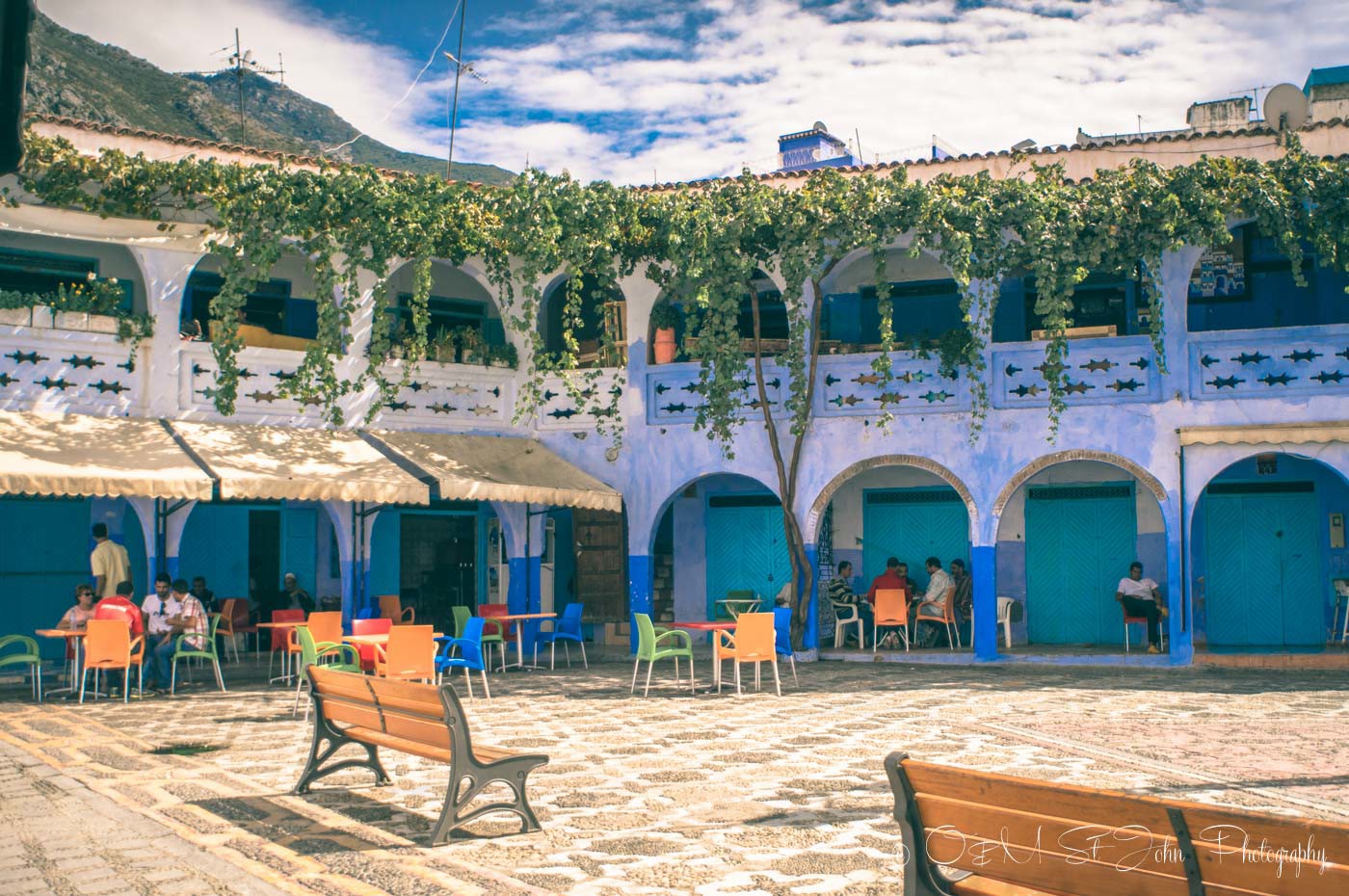
Traveling Soon? Here is a list of our favourite travel providers and accessories to help get you ready for your upcoming trip!
Tagine: The Poster Child For Moroccan Food
Tagine or tajine is one of the most popular dishes in Morocco and is one that you are guaranteed to find in any Moroccan restaurant. Tagine is historically a North African Berber dish that is named after the tagine pot in which it is cooked. There are dozens of different tagine variations across the country, each one is worth sampling! Yes, that might mean that you need to eat tagine on a daily basis to get through all the varieties of this traditional Moroccan food.
( In case you are wondering, we did exactly that!)
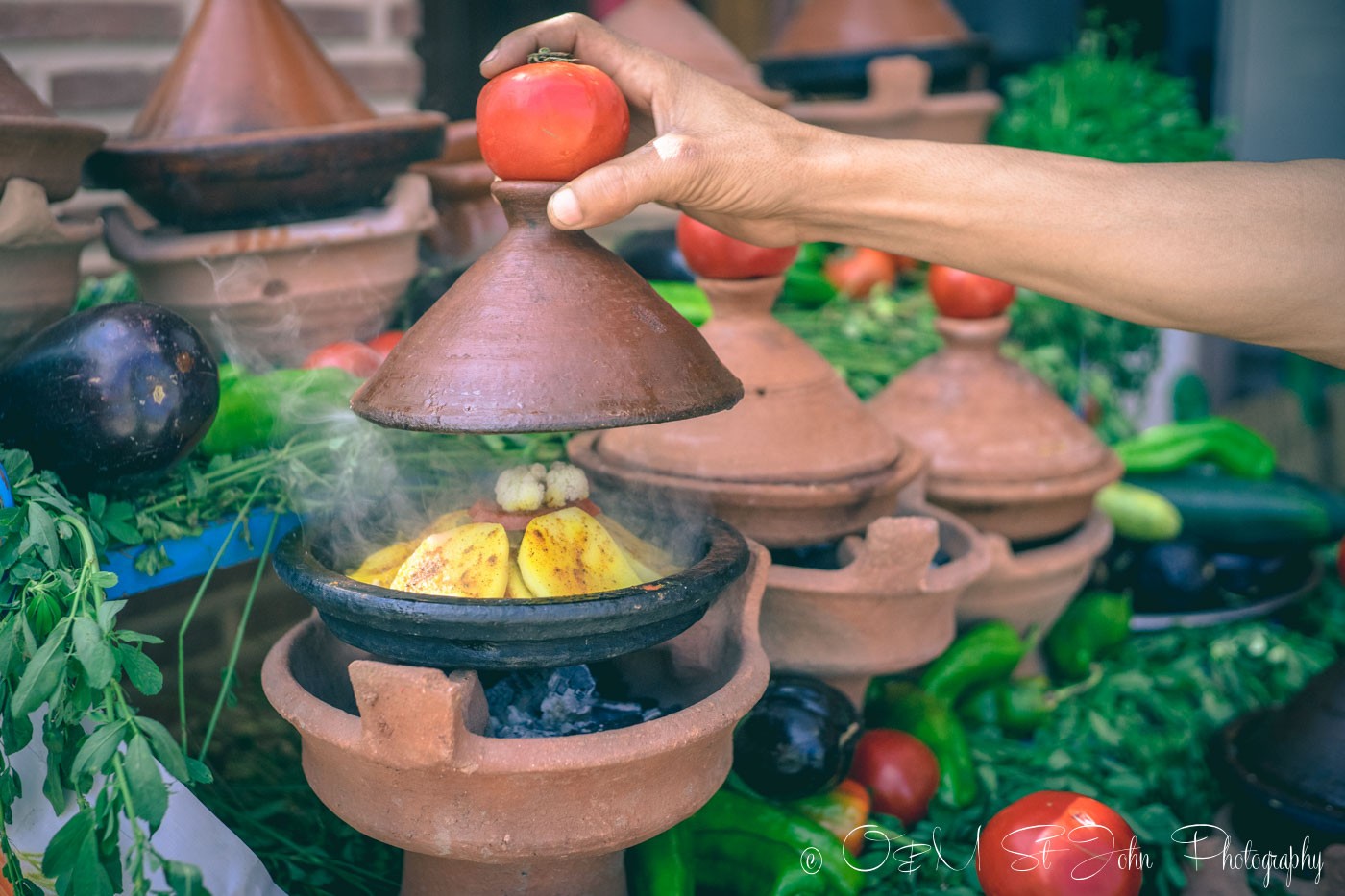
Chicken With Vegetables Tagine
The most basic and common one of all the tagine varieties is a straight-up chicken with carrots and potatoes, with a few bell peppers added to the mix. We found it to be the least flavourful and unique version.
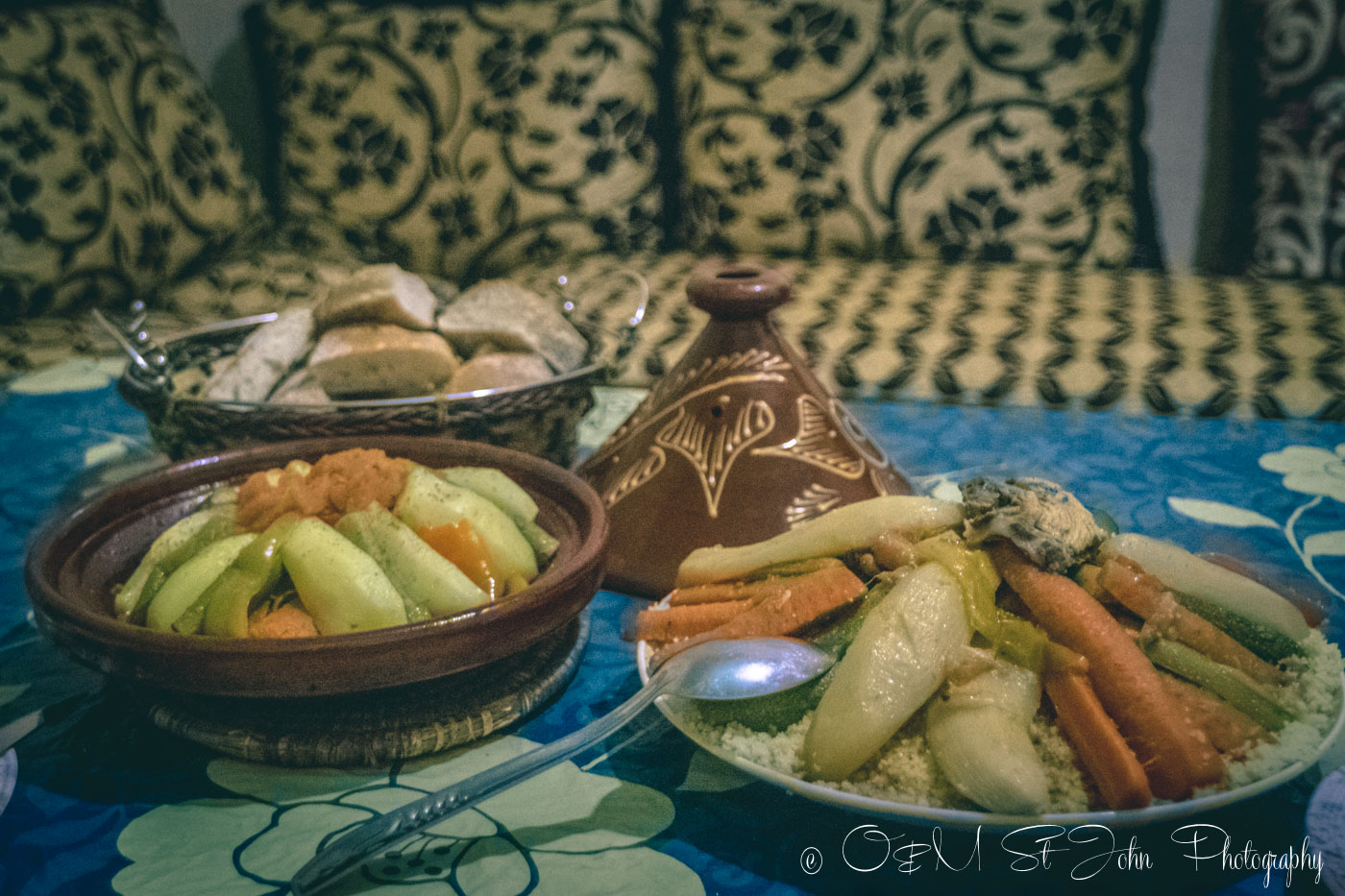
Beef Kefta Tagine
Beef Kefta was probably the second most popular tagine variety that we came across during our time in Morocco. Kefta is essentially ground meat (beef, lamb, etc), sometimes rolled into meatballs and mixed with spices, like garlic, coriander and parsley. If you order a Beef Kefta Tagine expect it to taste somewhat similar to ground beef, except 10 times better thanks to the abundance of spices/sauces/goodness that it is typically cooked in.
Another variation of the Beef Kefta includes a fried egg added to the dish at the very end of the cooking process. We’d opt for the Egg Beef Kefta over a regular Beef Kefta every time!
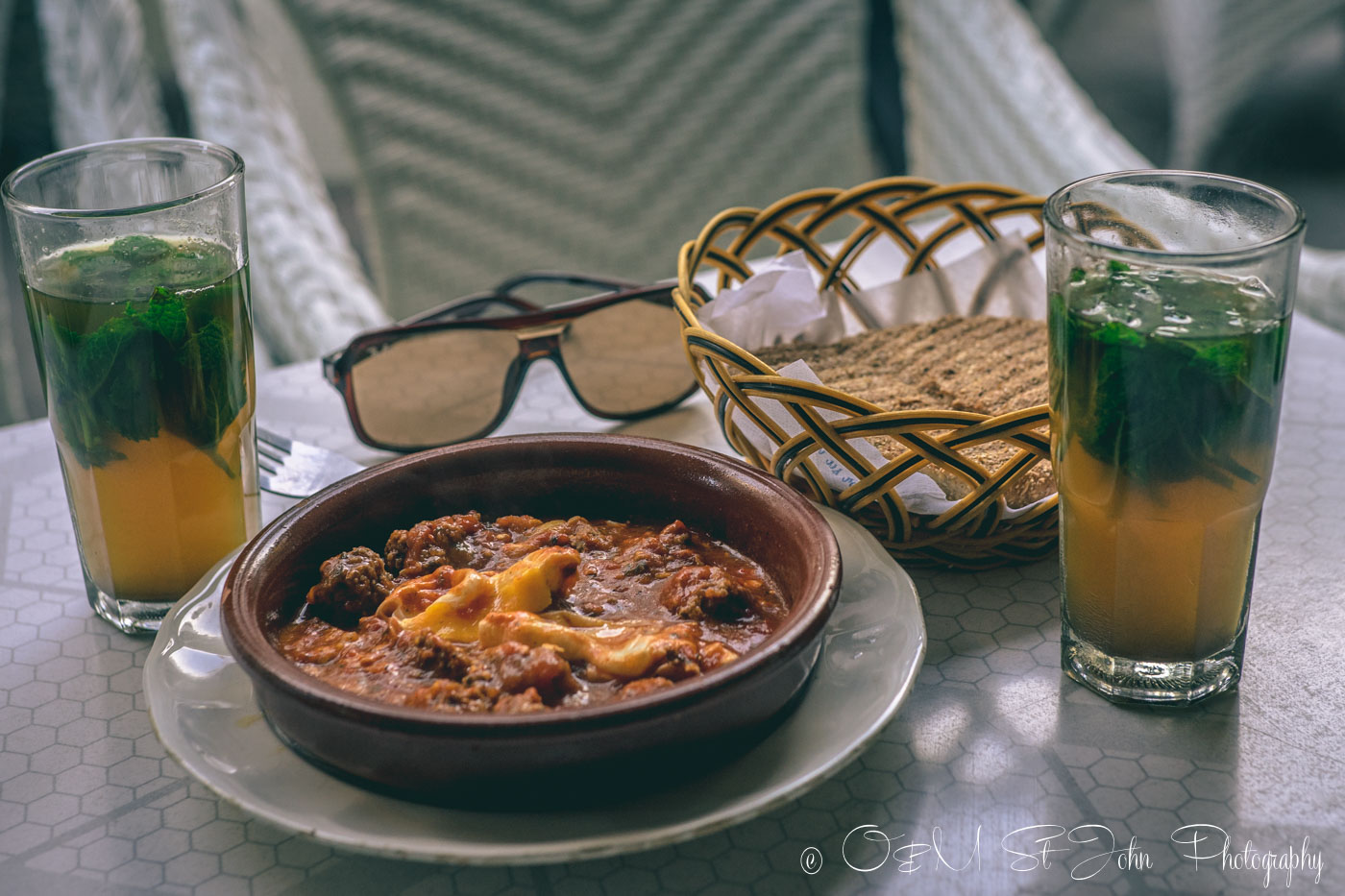
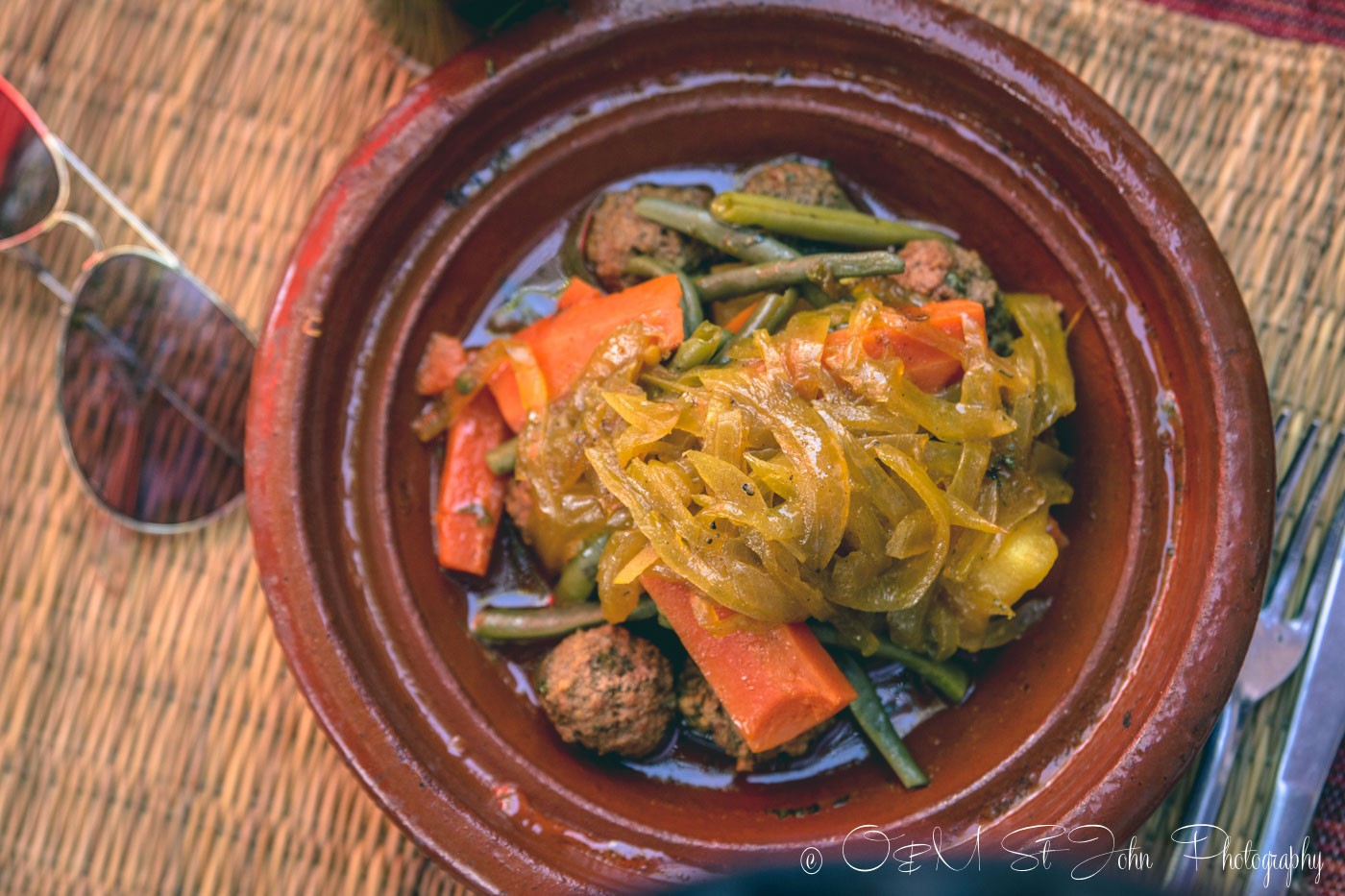
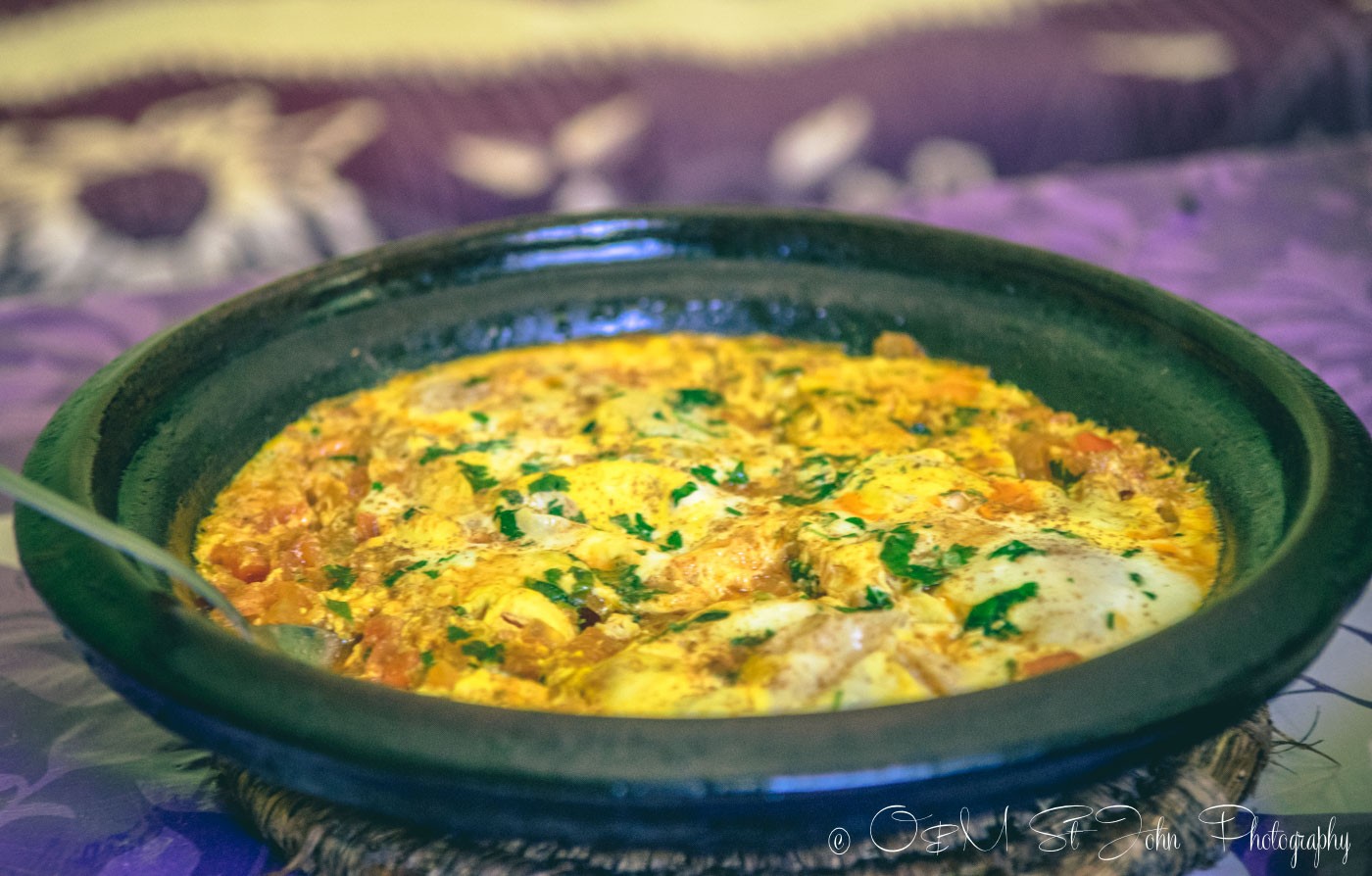
Lamb, Plums, And Eggs Tagine
Before arriving in Morocco, we were under the impression that Lamb is a staple in Morocco, but as it turned out, we were wrong. We struggled to find lamb tagine on the menus in restaurants across the country, but when we did, boy, was it delicious!
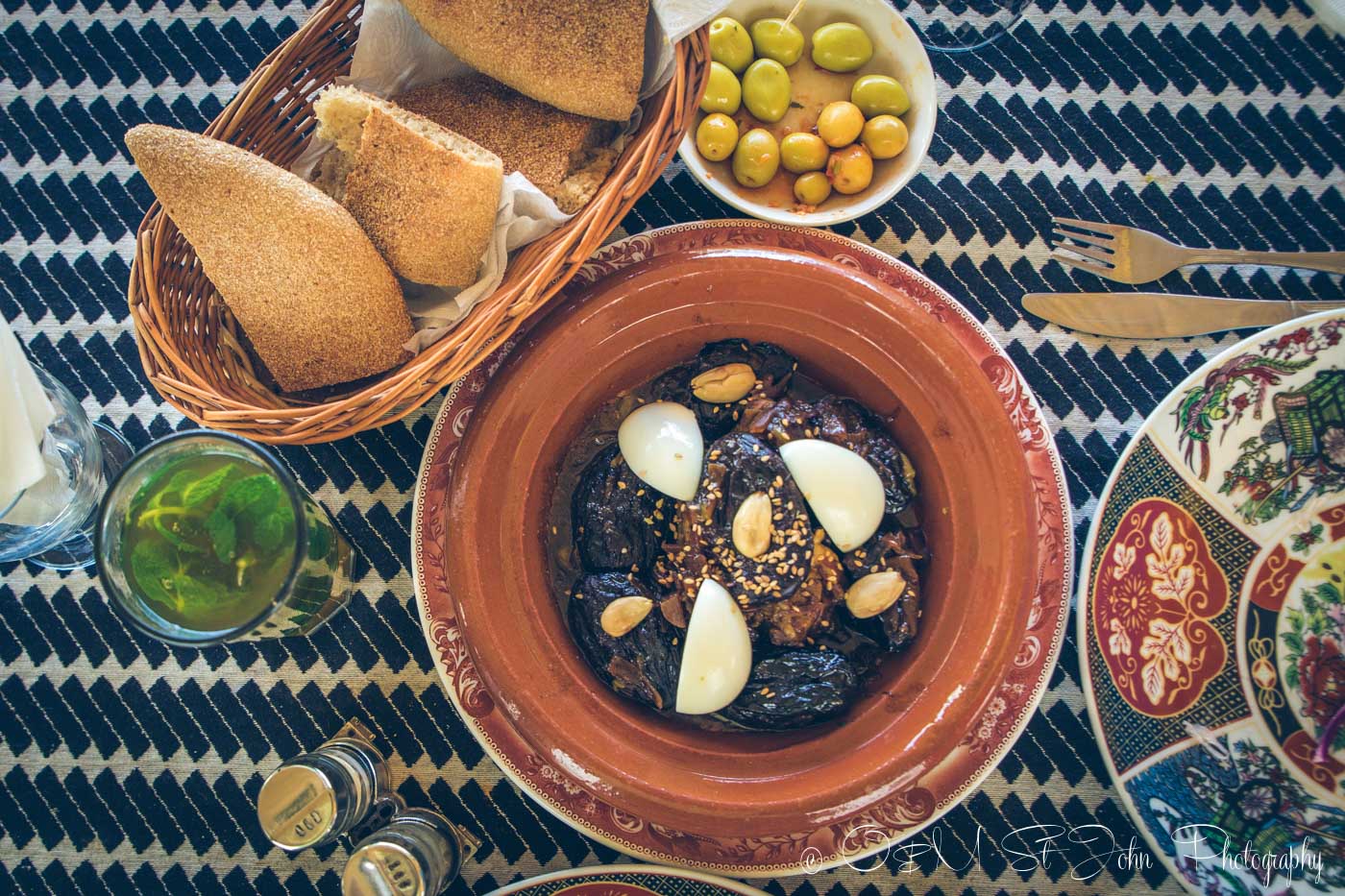
Lamb, Prunes And Almonds Tagine
The most delicious, finger-lickin’ good variety of tagine we had the pleasure of sampling in Morocco. There was something particularly yummy about the sweet, crunchy, and spicy taste of this incredible dish. It is best eaten with a simple loaf of crusty bread, used to soak up all the leftover juices.
This variety sometimes also came with figs instead of prunes.
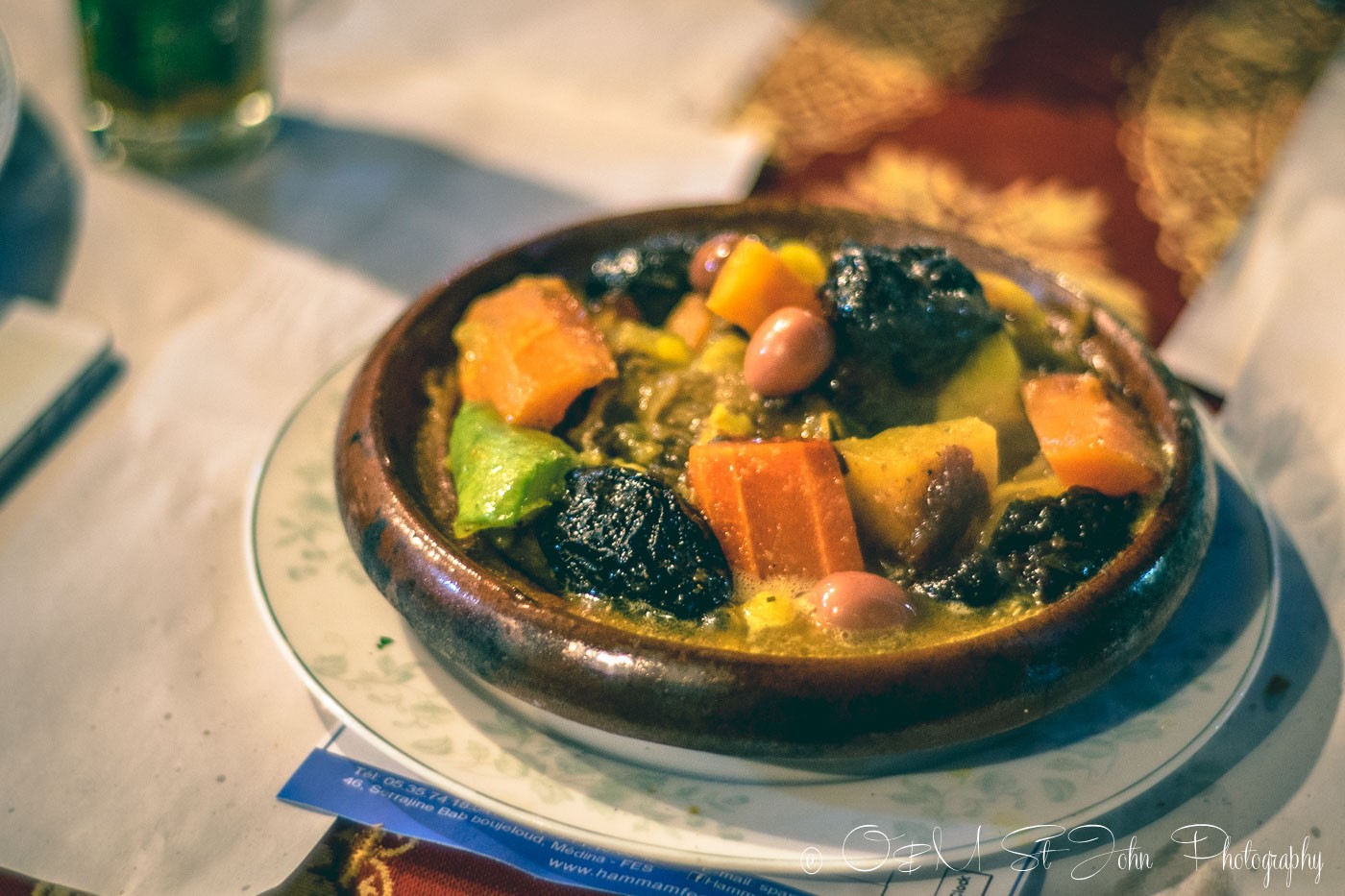

Couscous
Couscous is the second most popular dish found in Morocco. Just like with Tagine, couscous can come in a number of varieties, although chicken with vegetables was, again, the most common one we encountered and one you’re likely to see on a Moroccan table. Couscous base is made from a traditional North African semolina, which is steamed and served with meat and vegetables.
Couscous also has an important place in Moroccan culture, and has for centuries. It is common for Moroccan families to get together after Friday prayers and share a meal of couscous. You may notice that the streets are a bit quieter on Fridays, as most Moroccans are either headed to the mosque, or at home with their families.
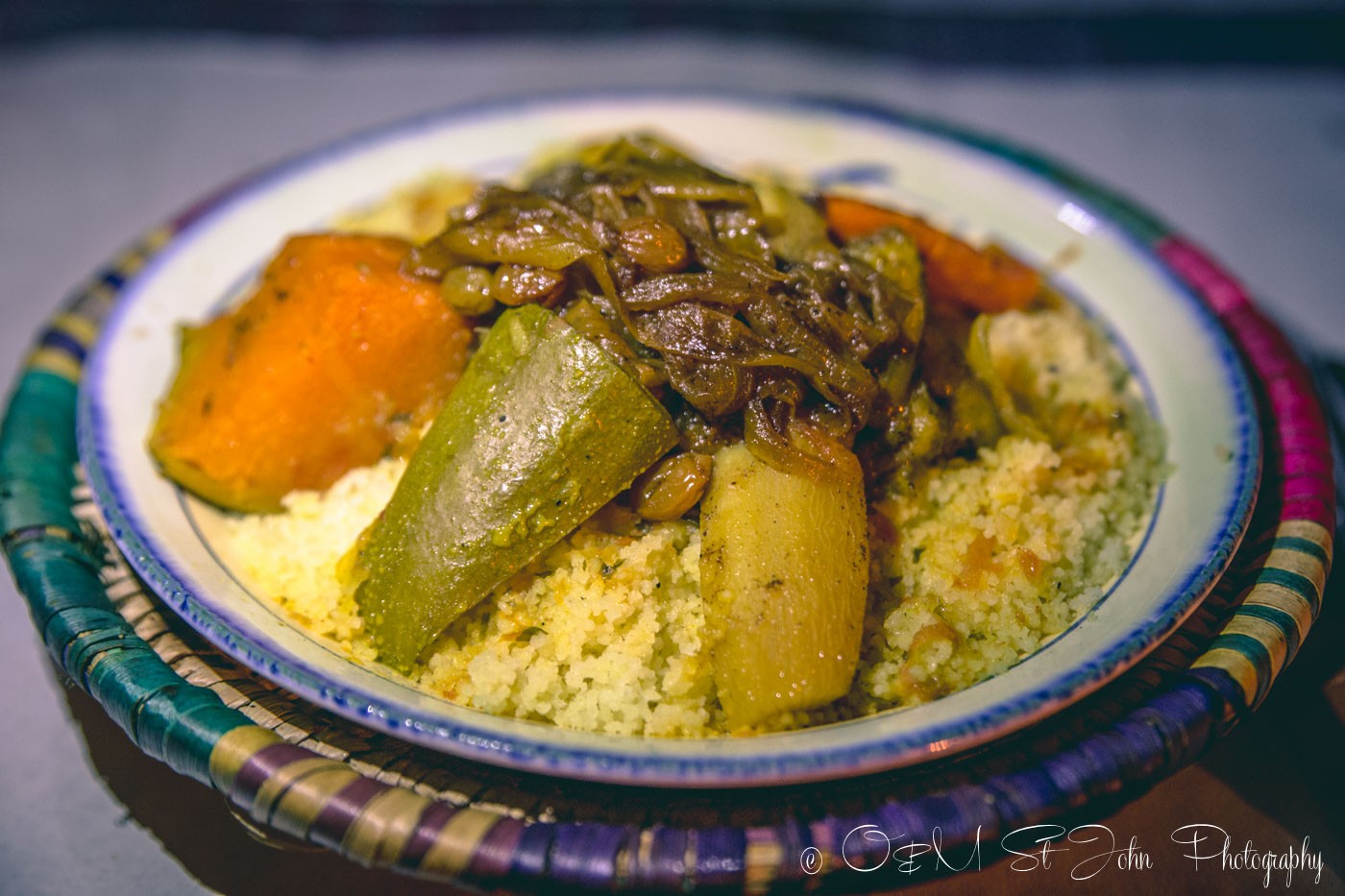
Harira
Harira is a delicious soup made from flour, lentils, chickpeas, vegetables, and small amounts of meat. It is commonly served as a starter but can also be eaten on its own as a main. We lucked out with our first taste of harira and got a chance to try the homemade version of it in Imlil.
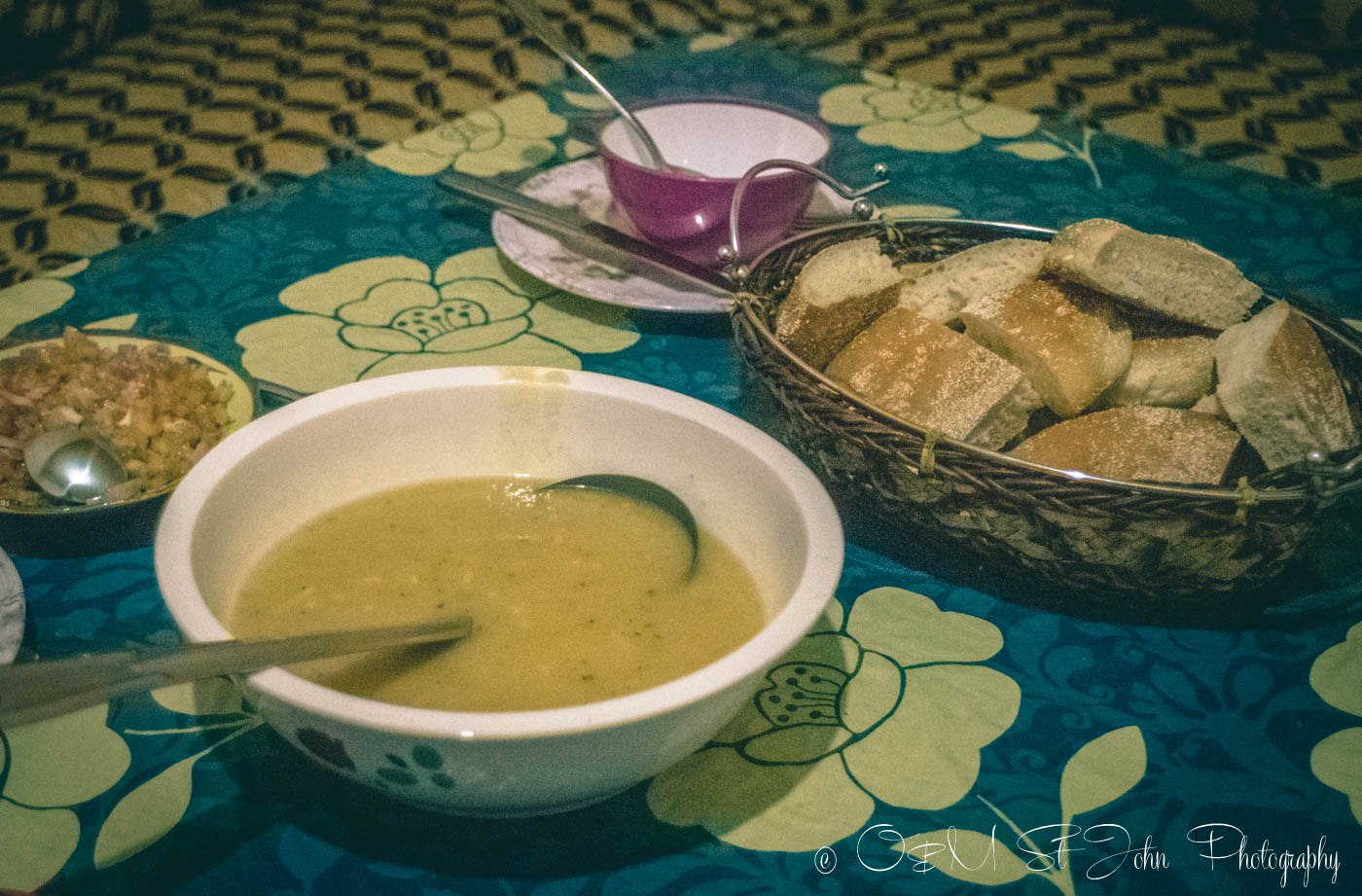
Bastilla
The name Bastilla comes from the Spanish word for pastry, or “pastilla” which, after being adapted into Arabic language saw the transformation of “p” into “b”. Bastilla is made by layering thin pieces of flakey dough between meat filling. Icing sugar is often sprinkled on top for that perfect balance of sweet and savoury. While today bastilla can contain beef and chicken, the traditional recipe calls for pigeon. We didn’t come across a pigeon bastilla during our time in Morocco, although perhaps we did and just didn’t know about it.
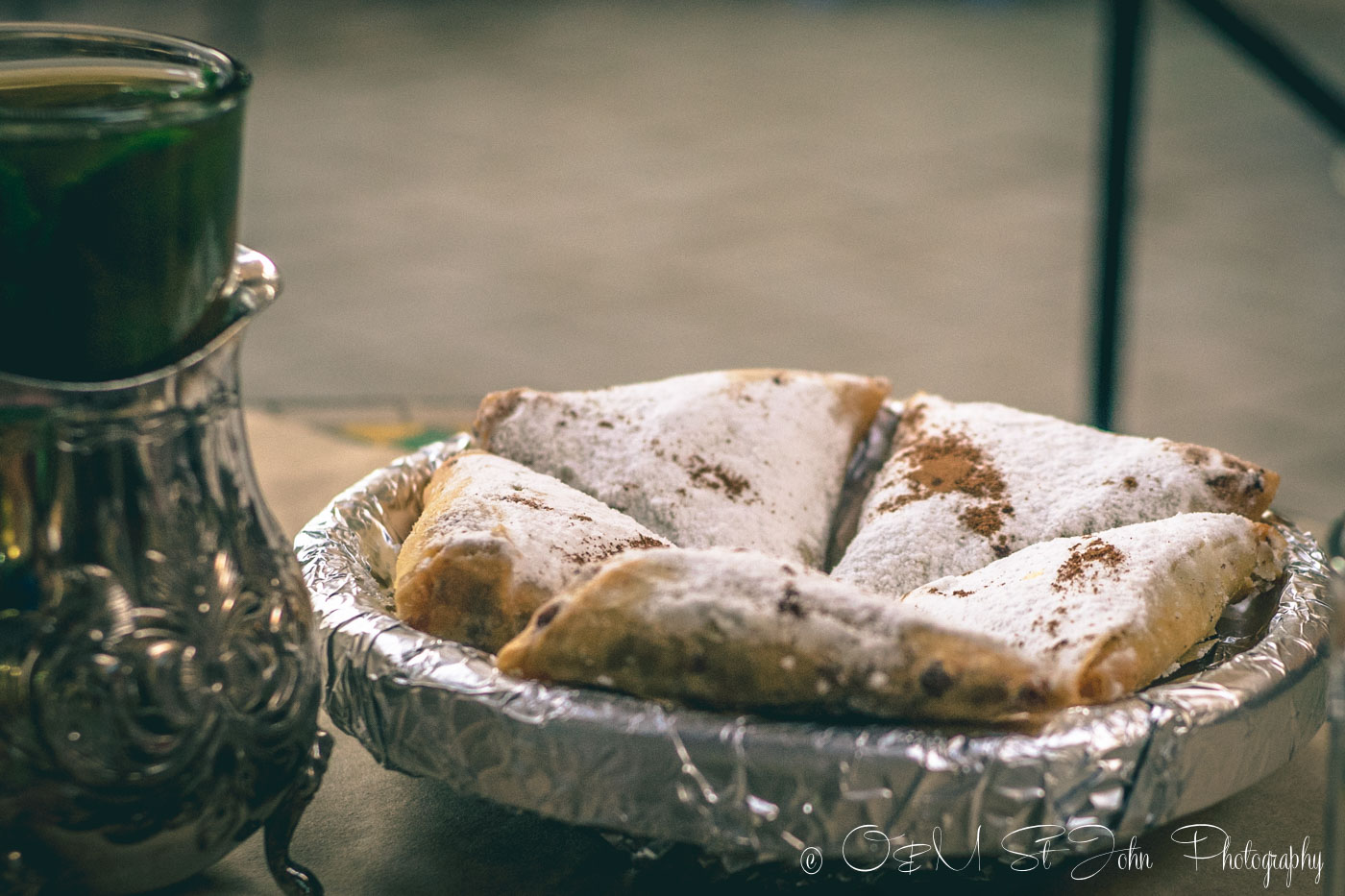
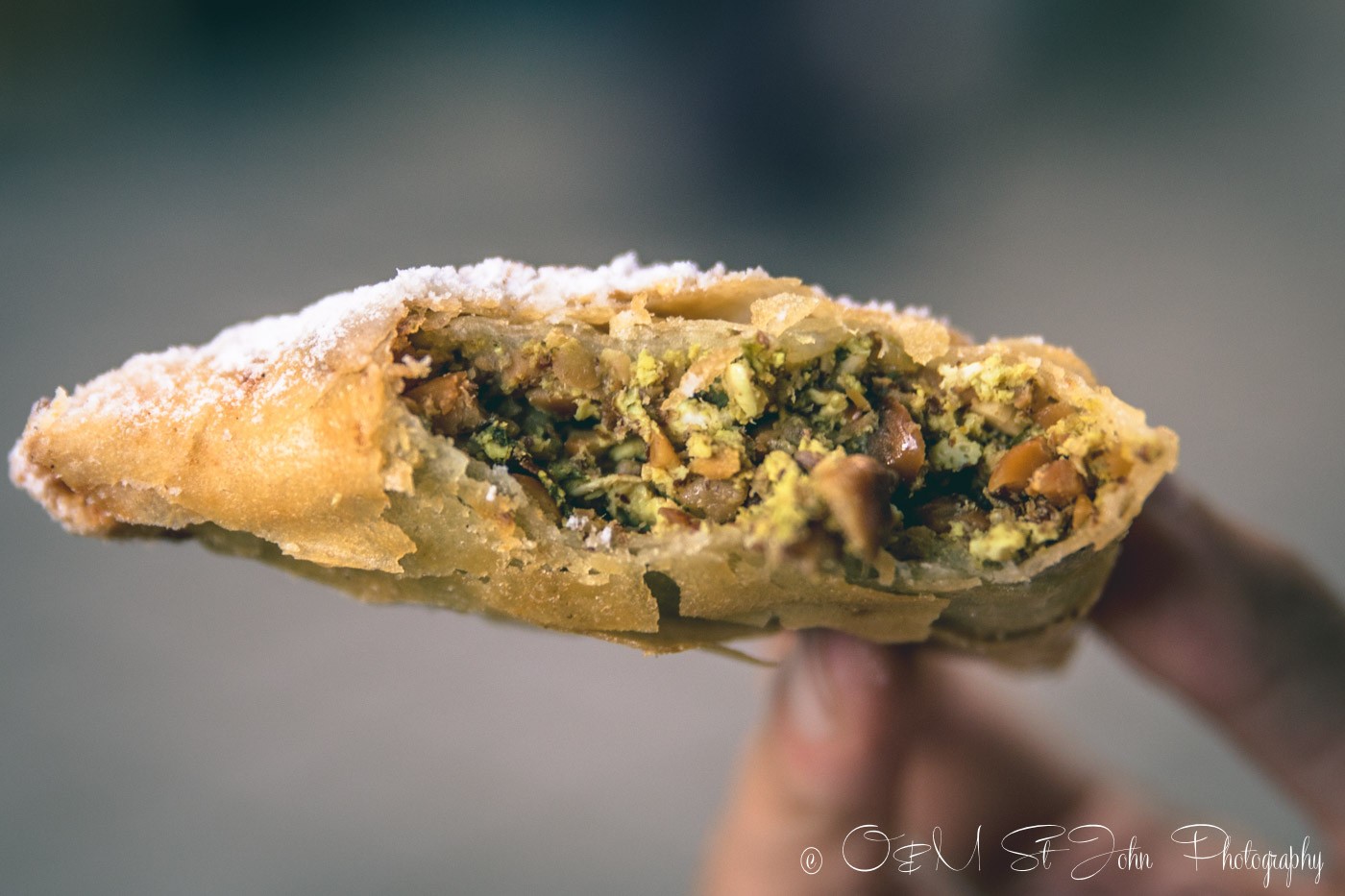
Moroccan Mixed Salad
Don’t be fooled by its name; the Moroccan mixed salad is not a side dish to order alongside your favourite tagine. This dish warrants your undivided attention, so we made sure to order it as one of our mains. And every time, the plate came out with a perfectly assembled combination of potatoes, tomatoes, onions, corn, lettuce, rice, eggs and whatever else the cook might’ve found in the kitchen that day.
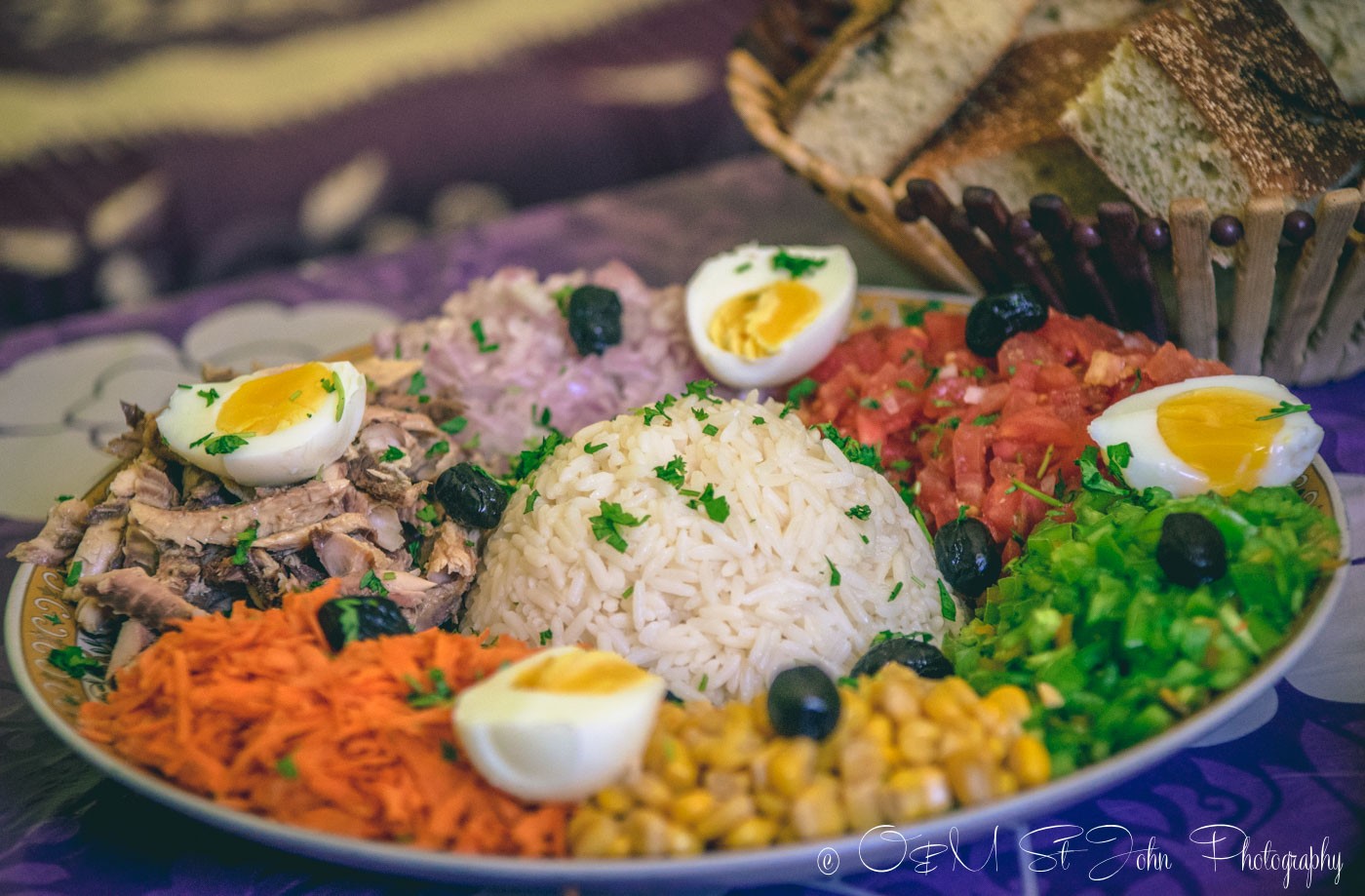
Fish Chraime
This list wouldn’t be complete without a fish dish, and this spicy, tomato-ey, garlicky fish stew is definitely worth a mention. Centred around a firm white fish such as cod or halibut, the stew is generously seasoned with cayenne, cumin, hot pepper, and paprika. Fish Chraime is served with bread or on a bed of rice, and the dish is especially popular with Moroccan Jews during Shabbat or holidays like Passover.
Taktouka
This simple, savoury dish is made from stewing tomatoes, bell peppers, garlic, and paprika together. It is usually garnished with fresh parsley and served with crusty bread or as an accompaniment to meat or fish dishes. Honestly, it can make for a perfect light meal just with some freshly baked Moroccan bread! While a lot of traditional dishes incorporate meat, there are plenty of veggie-based options to eat in Morocco.
Zaalouk
Another vegetarian side dish that can easily be a meal in itself is zaalouk, a cooked eggplant salad that incorporates tomatoes, lots of garlic, and olive oil. The mixture is cooked down to a dip-like consistency and flavoured with loads of spices and fresh herbs like cumin, paprika, cilantro and parsley. Like taktouka, zaalouk is served with bread for dipping or as a side dish for fish, chicken, or meat dishes. Wonderfully simple but some of the best Moroccan food we’ve tasted.
Moroccan Breakfast
There is something to be said about a traditional Moroccan breakfast served in a lot of riads and many restaurants across the country. It’s simple, filling and very delicious. The basic formula is mint tea, freshly squeezed orange juice, Moroccan bread, cheese, olive oil, olives, egg, jam, honey, and sometimes a bit of meat.
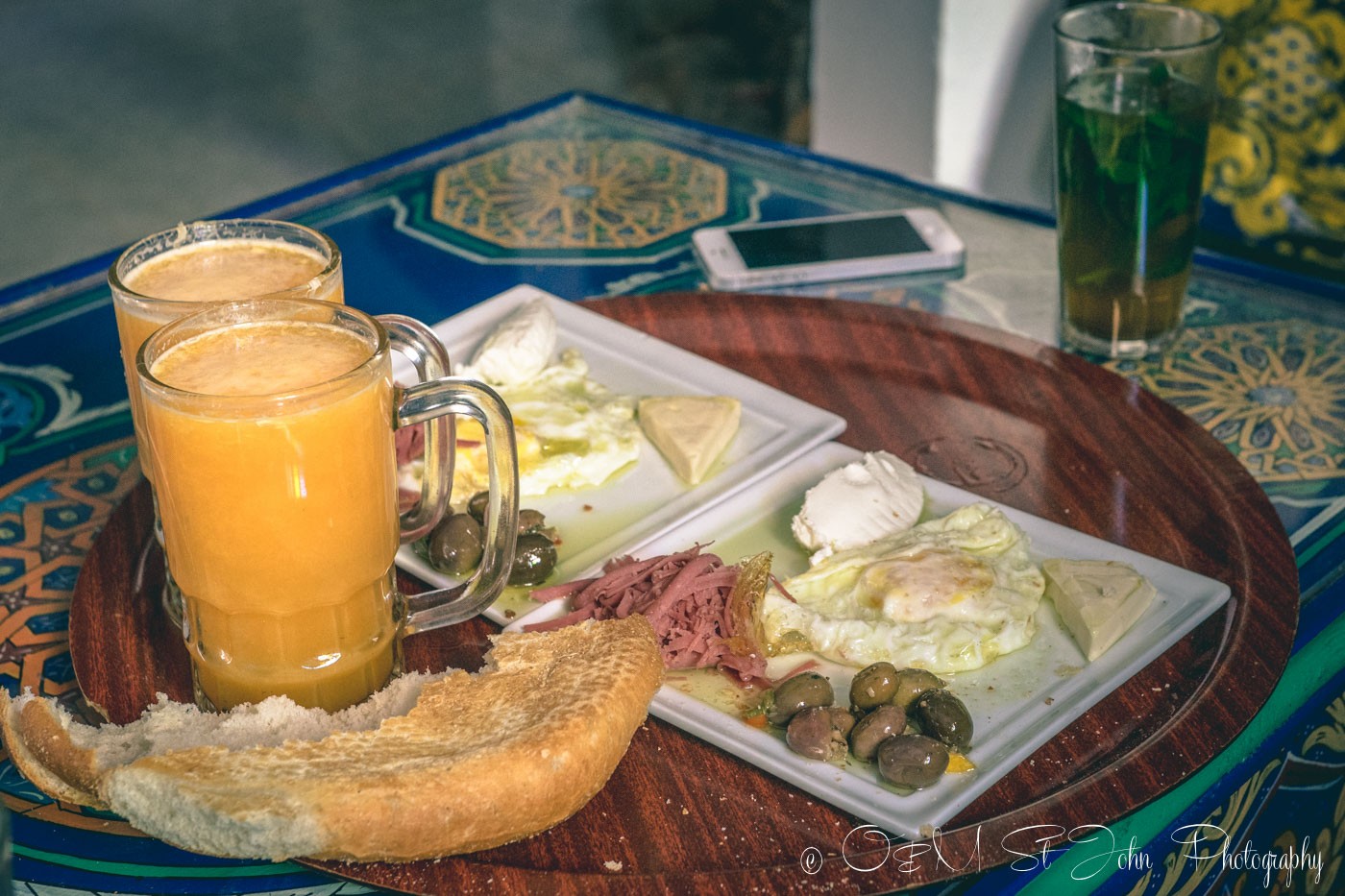
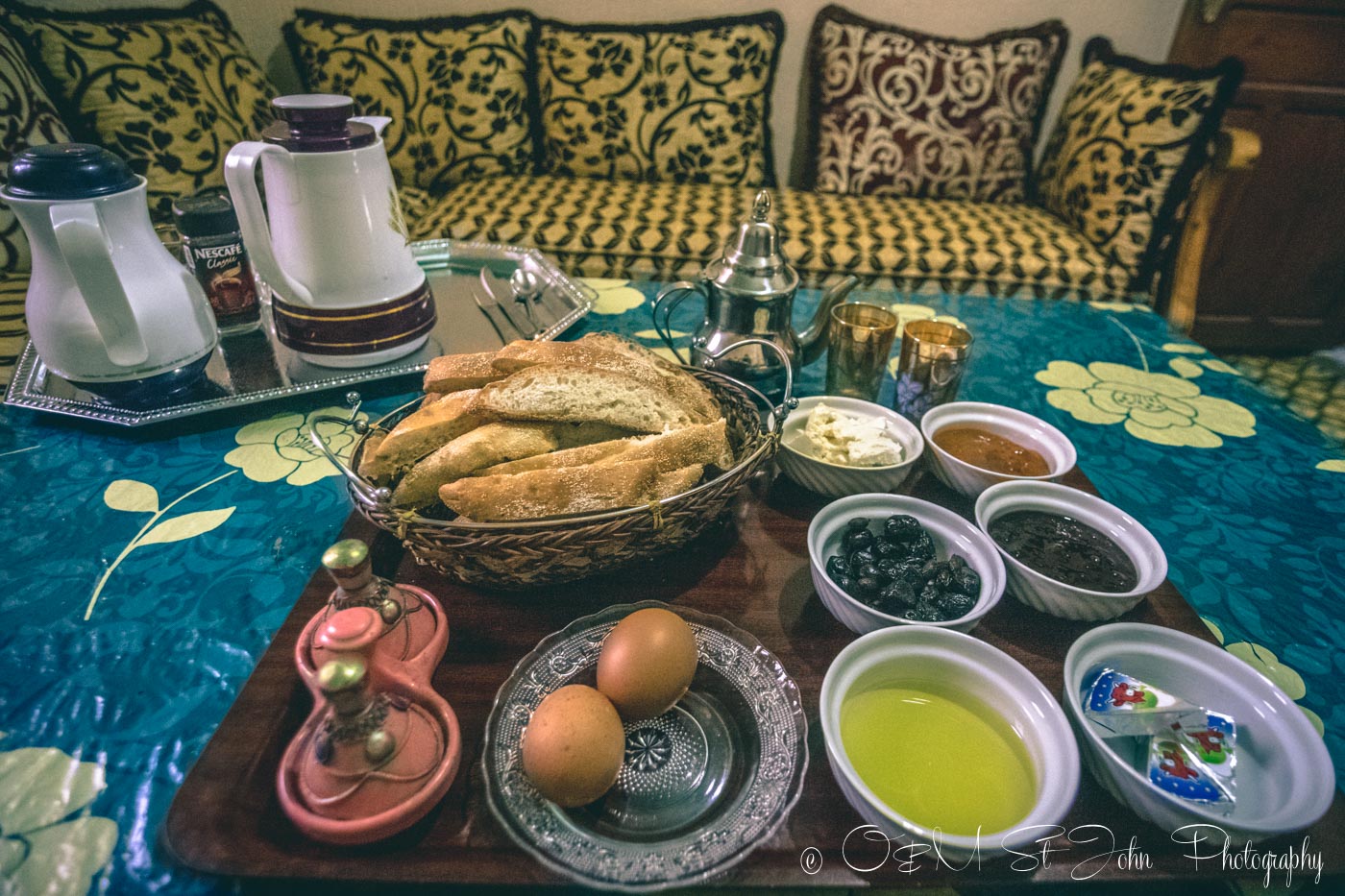
Moroccan Pastries
In between meals, we mowed down on some delicious Moroccan pastries, everything from mlawi and msemmen, pancake-like flatbreads, to more traditional sweet pastries with jam and sugar inside. And, surprise, surprise, they go really well with Moroccan Mint Tea!
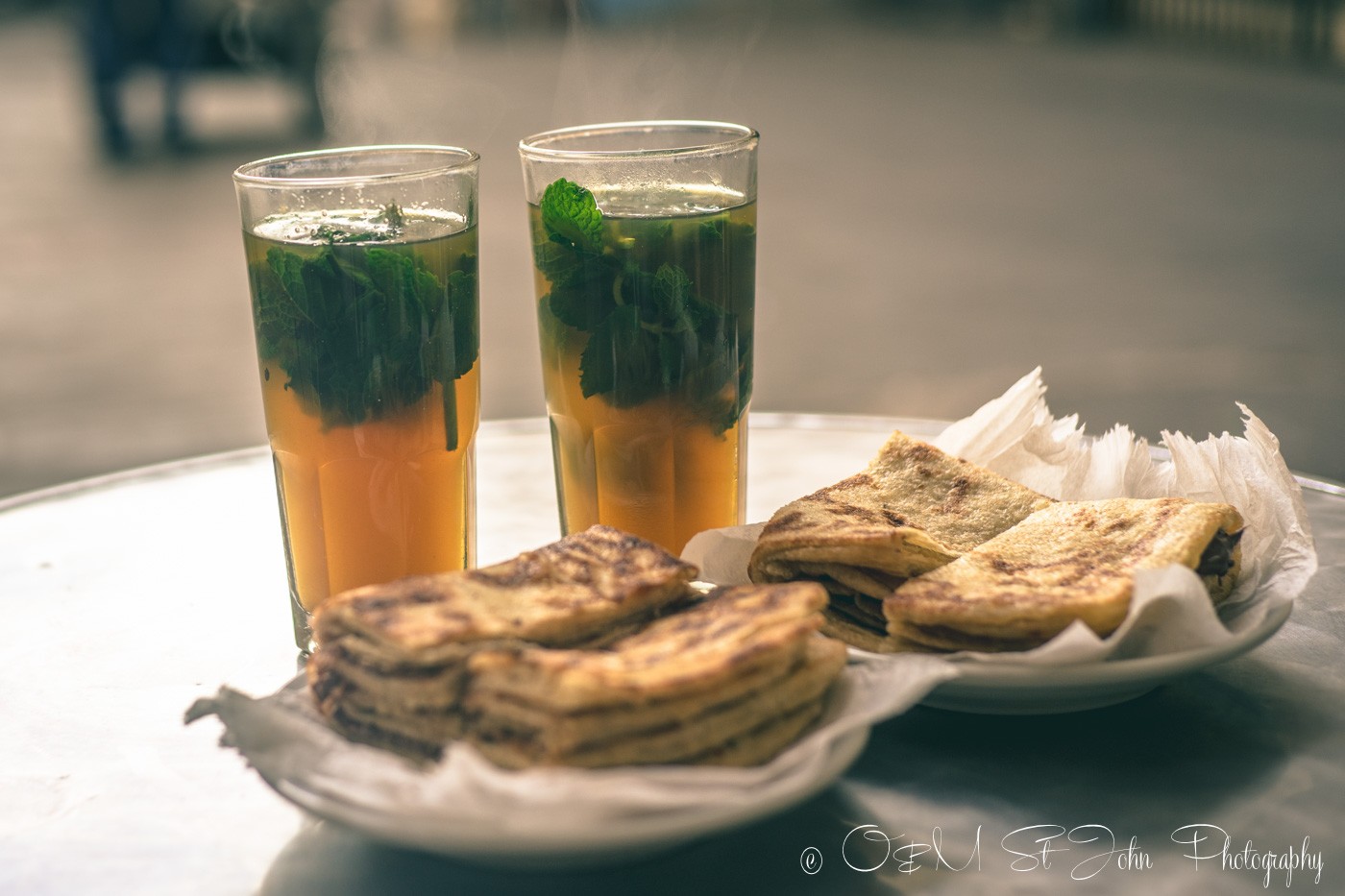
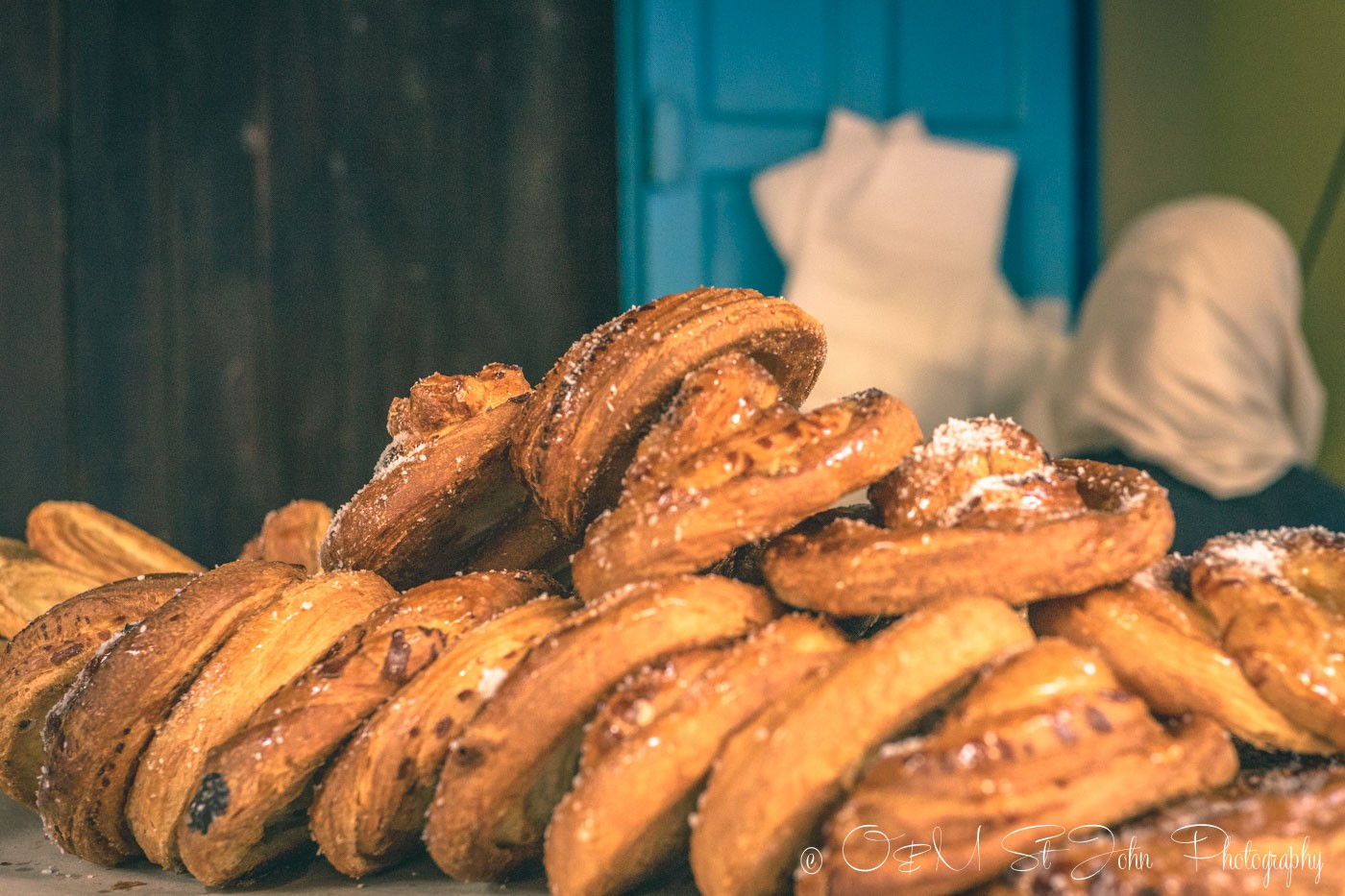
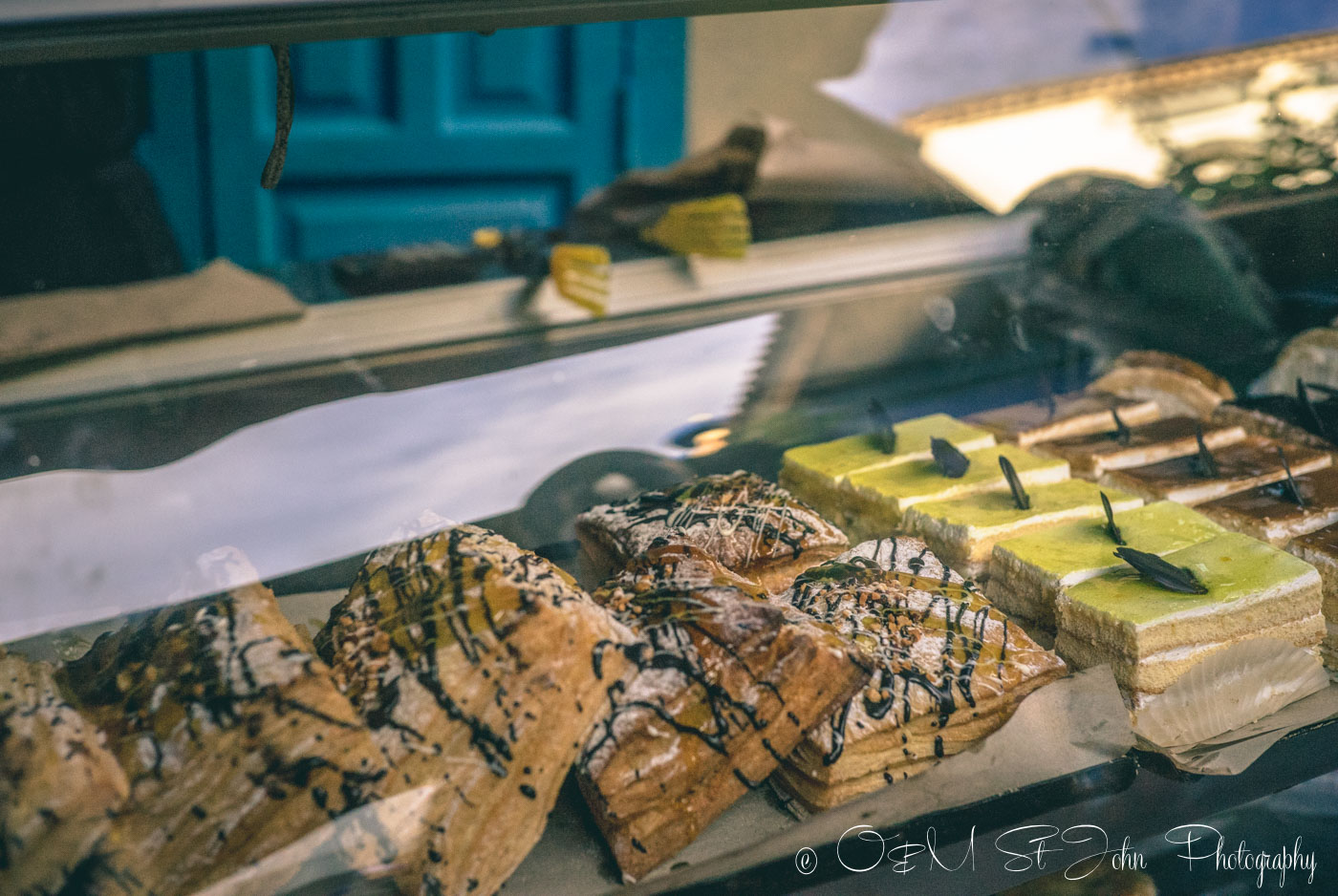
Moroccan Street Food
There are lots to explore on foot, and you don’t have to walk far down the streets of Morocco to find vendors selling all sorts of savoury snacks, sweet treats, and refreshing drinks. Here are a few that we sampled while we were there.
Sardines
I know that a lot of people have strong opinions about sardines, but we love them. In Morocco, grilled or fried sardines are a street food staple and perfect for when you’re on the go. The sardines are usually served with a spicy chermoula relish, and you can tuck a few into bread for a tasty sandwich.
Chebakia
If you find yourself craving a sweet treat, keep an eye out for chebakia. This fried pastry is rolled to resemble a rose, and then drizzled with a mixture of honey and orange blossom water. Different variations include a sprinkling of sesame seeds or using rose water rather than orange blossom water for the glaze.
Almond Milkshake
Most popular during Ramadan, the Moroccan almond milkshake is made with blanched almonds, milk, honey, and a bit of orange blossom water. Served nice and cold, this is a perfect refresher during a hot afternoon.
Needless to say, our worries for the lack of variety of food in Morocco never materialised. We left wanting more and in the end, decided to rank Morocco as one of our favourite countries visited last year – a title largely attributed to good food and amazing mint tea.
READ NEXT: 8 Destinations to Include in Your Morocco Trip


Yummy, I love food and love your list of dishes at Morocco which you post in your article. Thanks you so much for lovely and delicious article.